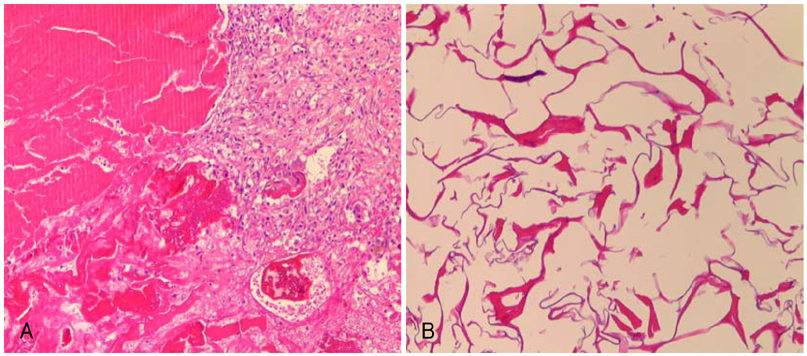Korean Circ J.
2008 Jun;38(6):339-342. 10.4070/kcj.2008.38.6.339.
Three Cases of Arterial Occlusion That Occurred After the Use of Angioseal(R)
- Affiliations
-
- 1Department of Internal Medicine, Vision 21 Cardiac and Vascular Center, College of Medicine, Inje University, Ilsan Paik Hospital, Goyang, Korea. medngj@ilsanpaik.ac.kr
- 2Department of Thoracic and Cardiovascular Surgery, Vision 21 Cardiac and Vascular Center, College of Medicine, Inje University, Ilsan Paik Hospital, Goyang, Korea.
- KMID: 2225783
- DOI: http://doi.org/10.4070/kcj.2008.38.6.339
Abstract
- Femoral arterial closure devices are now commonly used after both diagnostic and therapeutic coronary procedures. They have been shown to reduce the time to ambulation and to decrease the length of the hospital stay. Angioseal is a commercially available femoral artery closure device that has been approved by the Food and Drug Administration (FDA). The device sandwiches an intra-arterial absorbable anchor on the luminal side of the vessel and a thrombin plug on the surface of the vessel with using a self-cinching stitch. We report here on three patients who presented with acute and delayed arterial occlusive complications that were found to be due to an Angioseal anchor that was not appropriately reabsorbed.
MeSH Terms
Figure
Reference
-
1. Seok JH, Park YH, Kim MK, et al. Efficacy and complications of Angio-Seal® device in patients undergoing coronary angiography and angioplasty. Korean Circ J. 2003. 33:574–582.2. Mukhopadhyay K, Puckett MA, Roobottom CA. Efficacy and complications of Angioseal in antegrade puncture. Eur J Radiol. 2005. 56:409–412.3. Ferreira AC, Eton D, de Marchena E. Late clinical presentation of femoral artery occlusion after deployment of the angio-seal closure device. J Invasive Cardiol. 2002. 14:689–691.4. Applegate RJ, Rankin KM, Little WC, Kahl FR, Kutcher MA. Restick following initial Angioseal use. Catheter Cardiovasc Interv. 2003. 58:181–184.5. Ward SR, Casale P, Raymond R, Kussmaul WG 3rd, Simpfendorfer C. Efficacy and safety of a hemostatic puncture closure device with early ambulation after coronary angiography. Am J Cardiol. 1998. 81:569–572.6. Koreny M, Riedmüller E, Nikfardjam M, Siostrzonek P, Müllner M. Arterial puncture closing devices compared with standard manual compression after cardiac catheterization: systematic review and meta-analysis. JAMA. 2004. 291:350–357.7. Gonze MD, Sternbergh WC 3rd, Salartash K, Money SR. Complications associated with percutaneous closure devices. Am J Surg. 1999. 178:209–211.8. Gwechenberger M, Katzenschlager R, Heinz G, Gottsauner-Wolf M, Probst P. Use of a collagen plug versus manual compression for sealing arterial puncture site after cardiac catheterization. Angiology. 1997. 48:121–126.9. Goyen M, Manz S, Kröger K, Massalha K, Haude M, Rudofsky G. Interventional therapy of vascular complications caused by the hemostatic puncture closure device angio-seal. Catheter Cardiovasc Interv. 2000. 49:142–147.
- Full Text Links
- Actions
-
Cited
- CITED
-
- Close
- Share
- Similar articles
-
- Delayed Vascular Claudication Following Diagnostic Cerebral Angiography: A Rare Complication of the AngioSeal Arteriotomy Closure Device
- Retinal Arteriolar Changes in a Patient with Branch Retinal Vein Occlusion
- Acute Arterial Occlusion Associated with Protein C and S Deficiencies
- Radiological Findings of Vascular Involvement in Behcet's Disease
- A Clinical Study of 36 Cases of Retinal Artery Occlusion




